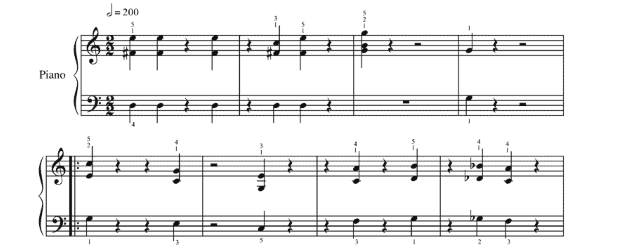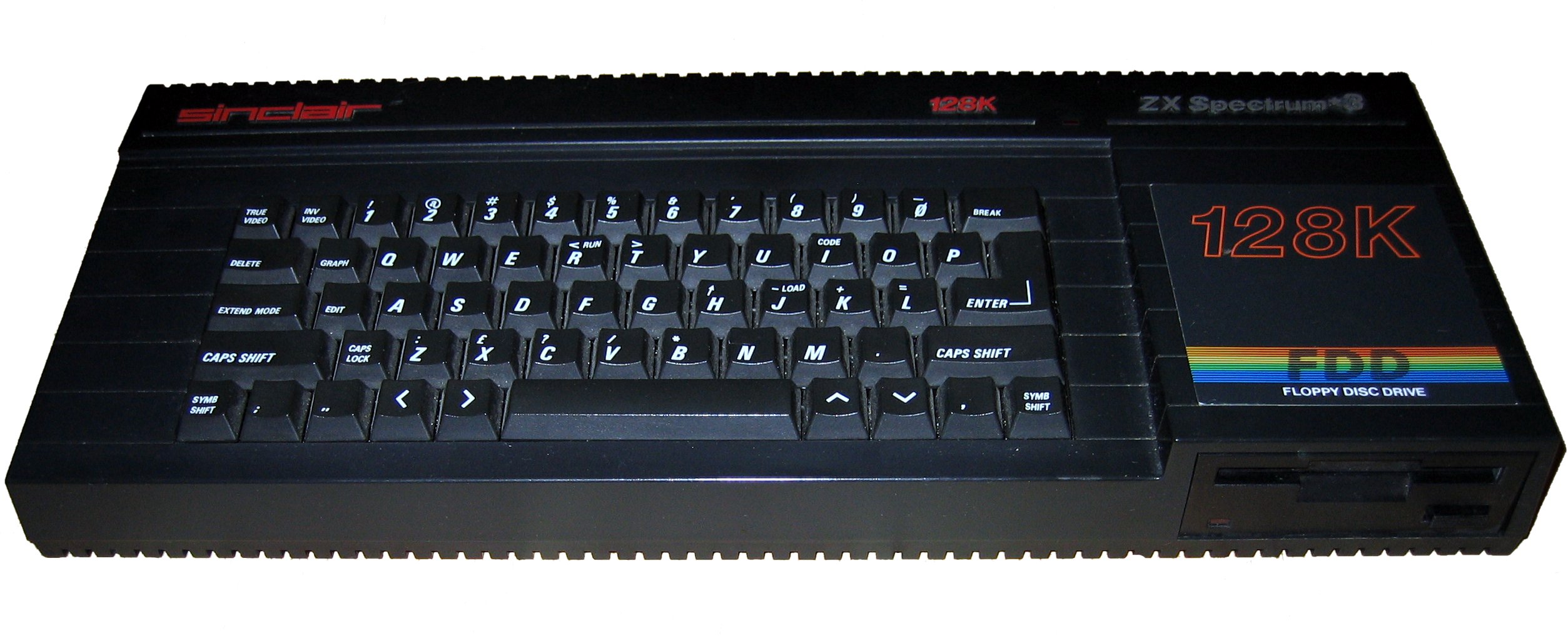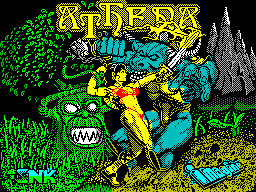
The first computer I ever really played with as a child was my dad’s Dragon 64, an amazing piece of technology where the only games were ones you wrote yourself, using either a knowledge of programming or by copying code from books and magazines. Over time, the latter drifted to the former. My first computer, and the first one I remember having music with its games, was a ZX Spectrum +3.

Look at that monster. When floppy disks were new enough to warrant shouting about on the case. And all those modifier keys!
The audio hardware in the Spectrum was fairly typical of the time, certainly part of the definitive sound of home computing in the eighties. A simple beeper, just one channel, capable of producing beeps over ten octaves. All audio in the Spectrum boiled down a series of instructions to “make a tone at this frequency for this long”. Primitive, yes, but the beeper persisted into the early days of the PC era, the hardware being pushed to the limits even as dedicated soundcards started to revolutionize the industry. In fact, it did so well we’ll be coming back to the beeper later in the series when we reach the Golden Age, the peak of gaming. LucasArts adventures, of course.
Arkanoid
Based on the original Breakout Arkanoid is, for me, the definitive block-breaking game and absorbed a non-trivial amount of my childhood, to the extent that I was almost late for primary school one morning when I reached the last level and my parents were so excited for me they waited until I was done before rushing me in.
Note that there are both music and sound effects, but not both at once. There’s the single-channel beeper at work. The game opens with music, as does each level, but the music quickly make way for the effects. Later advances would allow for two channels (technically, switching between two sets of sounds very quickly to achieve a similar effect – a technique that would see later use on the graphics front), but not in Arkanoid.
Athena

Strong Female Character. Guess her clothes couldn’t keep up
A bored female aristocrat fighting off hordes of mythical creatures while wearing almost nothing? No, not Tomb Raider. Athena. I’ll give the developers some credit, the princess starts out almost naked – the fact is even woven into the story – but the aim of the game is to pile on as much armour and as many weapons as possible so being naked is, from both a story and a gameplay perspective, A Bad Thing. OK, Athena gets credit for having a female protagonist looooooong before Samus Aran ever put on a Varia Suit, but on the other hand… Baby steps, I guess. It was 1987, after all.
Athena was a hard game, as was so often the case in those days, too hard to engage my flighty little boy-brain for long, but I kept going back to it, trying to make that armour last a little longer, dodge one more enemy, get one screen further. I never got far, but even as a child I could sense the attraction of a game that required determination and practice.
I don’t bring up Athena just to despair at how the representation of gender in gaming hasn’t changed in decades. No. Just listen to this…
That’s music. Compare it to the spartan beeps of the Arkanoid tunes. This is the same hardware, being pushed to its limits to produce real music, somehow putting instruments in there with the beeps. Again, the music has to get out of the way when the gameplay starts, the programmers were talented not wizards, but the opening music adds richness to the game not often seen in such early computers.
New Zealand Story
This game’s already had an airing on this blog – in fact it was the rediscovery of that game that prompted the wave of nostalgia leading to this whole series. I have no idea how far I got into New Zealand story, I suspect it wasn’t far. I do remember it being one of the first games I ever played to include boss fights, made so popular by shmups like R-Type or Gradius (Shoot the core!). Difficult, yes, but beating a boss was one of the true joys of gaming for me as a child. Also, it featured an early example of the apparently now-mandatory underwater sections. But no sewer levels, thank Zarquon.
But again, it’s not just here to make me go all misty-eyed for a distant childhood, it’s here for two reasons. One, the music is just wonderful, so unrelentingly cheerful. OK, so the in-game music consists of only one track repeated over and over until your ears cry for mercy, but… Two, that’s right – in-game music. Sound effect and music playing nicely together. Note that the quality of both is lower than in the other games – a necessary limitation of the technique. But the drop in quality isn’t horrendous, and again it makes playing a game a whole new experience. Today we don’t even question having music to go with your gameplay. Back then it was a revolution.
We could be here all day…
I could list more. Skate or Die. Outrun. California Games. Wizball. Rolling Thunder. All games I enjoyed as a child but those three up there perfectly sum up my early childhood, hopefully giving a bit of background to where video game music came from and where it started heading. Of course in those days ports were everywhere, there were as any systems as there were games and huge numbers of games started life in a cabinet in an Arcade. Therefore I make no claim that what I describe is the definitive version or even the first version, but they were the versions I played and there were how I personally experienced the early evolution of video game music, from a handful of beeps to the very foundation of the chiptune genre we know and love today.
